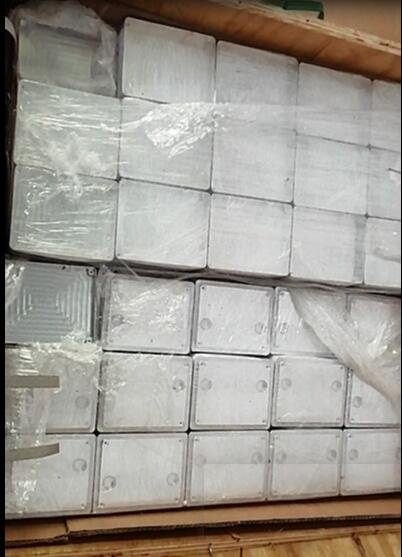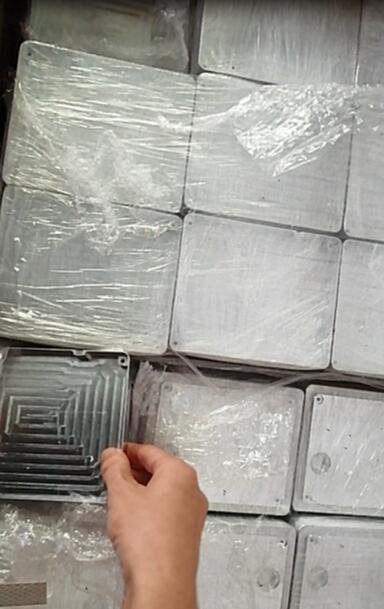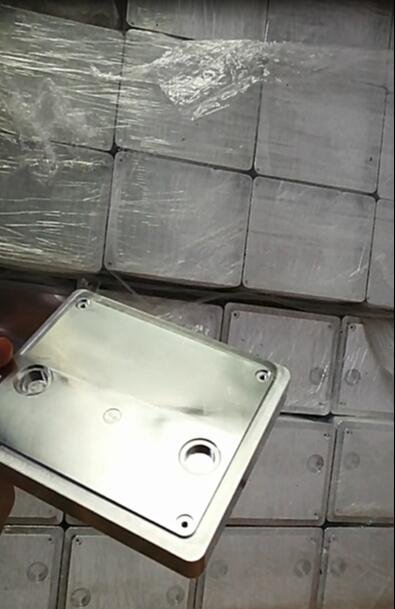Electronics enclosures are essential components when it comes to the manufacturing of electronic devices. They provide a secure and reliable way to store and protect electronics from environmental elements, as well as provide easy access for maintenance or repairs. With the right materials and designs, the enclosures can also help reduce noise levels, improve heat dissipation, prevent EMI interference, and meet any other requirements that might be necessary for specific applications. In this guide, we will discuss all aspects of designing and manufacturing electronics enclosures so you can create the perfect product for your needs.
What is an Electronics Enclosure?
An electronics enclosure is a protective housing for electronic components and circuits. It helps protect against electromagnetic interference, dust, moisture, and other environmental factors that can damage or disrupt the performance of the device.
The enclosure also serves as a shield from accidental contact with electrical components inside, which could result in electric shock or even fire. Depending on the type of electronics, the enclosure can be made out of metal, plastic, or a combination of both. It is important to select an enclosure that is suited for the type and size of electronic components it will house.
Types of Electronics Enclosures
Depending on the material used, electronic enclosures can be classified into metals and plastics.
Metal enclosures are most commonly used in industrial settings, due to their ability to protect against extreme temperatures, corrosion, and physical damage. They also help prevent electromagnetic interference from outside sources.
Aluminum Enclosures
Aluminum enclosures are the most popular of all metal enclosures, due to their lightweight and durable nature. They can be machined into different shapes and sizes, as well as powder coated for better protection from oxidation.
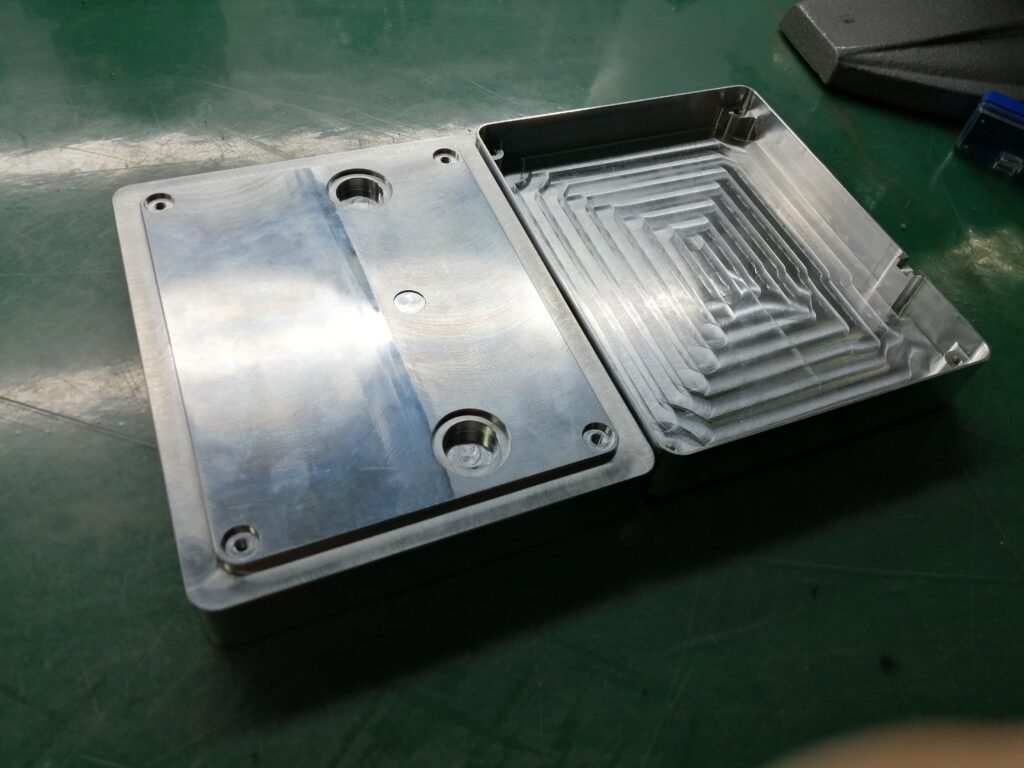
Steel Enclosures
Steel enclosures are also available for high-strength applications with more rugged requirements, such as those found in military or aerospace industries.
Stainless steel enclosures
Stainless steel enclosures provide excellent corrosion resistance and durability, making them suitable for highly corrosive environments.
Plastic enclosures are best suited for less demanding applications, typically used for consumer electronics due to their lighter weight and lower cost. Plastic does not offer the same level of protection as metal but can still be effective in most applications.
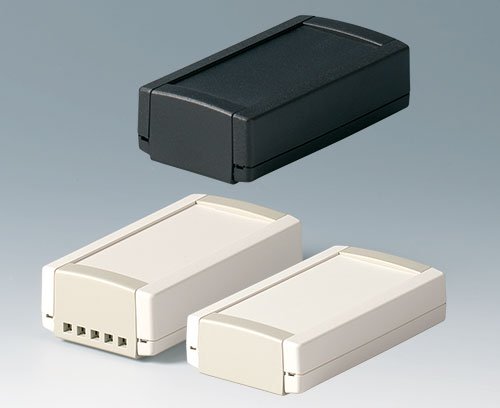
ABS plastic enclosures offer good impact resistance, along with good chemical and corrosion resistance.
Polycarbonate enclosures provide superior mechanical strength and durability, as well as excellent flame retardancy.
Customized enclosures are available for specialized applications. These can be made out of a variety of materials and designed to fit the exact specifications of the electronics inside.
While depending on the application, electronic enclosures can be classified into below types:
Computer enclosures: This type of enclosure is used to house any type of computer, such as servers or personal computers.
Instrumentation enclosures: These enclosures are designed for various instruments, including medical devices and automotive sensors.
Industrial enclosures: Used in industrial applications, these enclosures must be able to withstand extreme temperatures and harsh environments.
Control enclosures: Control enclosures are used to house electrical and electronic control systems.
Communication enclosures: These enclosures protect radio equipment, as well as other communication devices that require a higher level of protection against environmental factors.
Medical equipment enclosure: Medical equipment enclosures are designed to protect sensitive medical devices, such as MRI machines and X-ray machines.
Manufacturing Processes for Electronic Enclosures
The exact manufacturing process depends on the type of enclosure being produced. There are quite a few ways to manufacture electronic enclosures, below are some most commonly used types:
CNC Machining
CNC machining is the most common method, which uses computer-controlled tools to cut and shape the material into the desired geometry. CNC machining can be used to create both customized metal and plastic enclosures.
Injection Molding
Injection molding involves using heated plastic resin in a mold to form the enclosure shape, it’s mainly used for larger-scale production of plastic enclosures, while providing an economical way.
Sheet Metal Fabrication
Sheet metal fabrication involves cutting, bending, welding, and other processes to create the desired geometry from sheet metal, and this manufacturing way is often used for metal enclosures in larger production runs, or complex shapes that cannot be created with a CNC machine.
3d Printing
3D printing is a newer form of manufacturing that uses 3D models and can produce complex shapes from various materials. It’s often used for producing custom or prototype enclosures.
Depending on the type and complexity of your device, different processes may be necessary in order to achieve a high-quality product. It’s important to consult with an experienced enclosure manufacturer who can guide you through the entire process.
When selecting an enclosure manufacturer, make sure they have the experience and expertise to produce a quality product that meets your exact specifications. No matter which method is used, all electronic enclosures must meet strict standards for safety and performance.
Finishing Processes
After the enclosure has been manufactured, it needs to be finished with a coating to make it look attractive and protect it from corrosion. Common coatings used on enclosures are anodizing, plating, powder coating, and painting.
Anodizing is a process that increases the durability of an aluminum enclosure by creating a protective layer on its surface. It’s very popular for aluminum enclosures and comes in a variety of colors.
Plating is usually used for steel enclosures to protect them from corrosion and give them an attractive finish. Nickel, chrome, and gold are common plating choices.
Powder coating is a dry finishing process where powder particles are electrostatically applied to the enclosure’s surface and then heated. This method provides superior protection and can also be used to give the enclosure a wide range of colors.
Painting is another popular finishing option, especially for plastic enclosures. Paint can be applied to both plastic and metal enclosures and comes in a variety of colors.
The type of finishing process chosen is based on several factors including the material it is made out of, the application it will be used in, and the desired look. No matter which finishing process is used, it’s important that the enclosure meets all relevant standards and looks good. A quality finish is essential for protecting the electronics inside from damage.
Design Considerations for Electronics Enclosure Manufacturing
When designing an electronic enclosure, there are many factors to consider. Some of the most important ones include:
• Size and shape: The size and shape of the enclosure must be appropriate for the electronics it will house. If possible, engineers should design enclosures with a modular design that can accommodate different electronic components. This makes it easier to adapt the enclosure for different applications.
• Ventilation: It is important to include adequate ventilation in electronic enclosures so that they don’t overheat and cause damage to components.
• Weight: If the enclosure will be moved around, it should be lightweight enough that it can be carried easily. This is especially important for portable devices.
• Connectors: It is important to include the appropriate connectors on the enclosure so that it can be connected to other devices or power sources.
• Environmental conditions: Electronic enclosures must be designed to withstand extremes in temperature, humidity, and dust levels that are common in their intended environment.
By taking all of these factors into account, engineers can ensure that their electronic enclosures will be safe and reliable.
Quality Control
No matter which method is used to manufacture the enclosures, quality control is essential. This includes testing the components for strength, durability, and performance before they are assembled. The enclosure should also be tested after assembly to ensure that it meets the desired specifications.
Quality control is especially important when manufacturing enclosures for safety-critical applications. In these cases, manufacturers should test the enclosure extensively and use materials that meet the highest safety standards.
By implementing rigorous quality control measures, manufacturers can produce high-quality enclosures that meet their customers’ needs.
In conclusion, there are many different methods of manufacturing electronic enclosures, and careful consideration must be given to all aspects of the design process. By selecting an experienced enclosure manufacturer who understands the entire process, it is possible to create a high-quality product that meets your exact specifications. Quality control is also critical for ensuring that the final product meets all safety and performance requirements. With the right design, materials, and processes, it is possible to manufacture electronic enclosures that are safe, reliable, and attractive.
Benefits of Using Electronic Enclosures
There are many reasons to use electronic enclosures when creating devices and systems. With the right enclosure, it is possible to:
• Protect the electronics from damage or interference due to dust, moisture, or other environmental factors.
• Reduce noise and electromagnetic interference that could interfere with device performance or cause disruption in nearby equipment.
• Enhance the product’s appearance and make it look more professional.
• Increase the system’s life span by preventing corrosion or other damage due to environmental conditions.
Using electronic enclosures is a great way to ensure that your device or system meets all of its performance requirements and looks good while doing it.
Conclusion
Making the right choice for your electronic enclosures is essential for creating a successful product. By understanding the different methods of manufacturing and taking all factors into account, you can create an enclosure that meets all of your needs. With a quality-made enclosure, you can be sure that your device or system will last and perform as expected.
Shanghai Elue is a leading provider of custom electronic enclosures, offering a variety of products and services to meet the needs of our customers. Our experienced engineers can help you create an enclosure that meets your exact specifications and provides maximum protection for your electronics. Contact us today to learn more about how we can help with your project.
